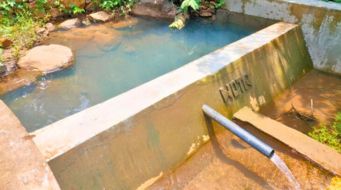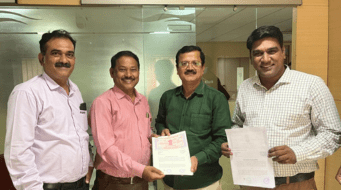Navnath Ghodake
Water is an essential requirement for all forms of life, both human and animal. One can say that the quality of life of a person depends heavily on the quality and availability of water supplied to him or her. It is in that context that the Watershed Organisation Trust works in the villages of Udaipur and Karauli districts, among other locations across India, to improve the supply and quality of water and thus the quality of life as a whole. Our work here is supported by Concern India Foundation and Volkswagen Financial Services.
Through this work, we aim to improve the quality of life of the people of these villages. I visited these villages recently. During my survey, I came across problems related to water, health, education, and other cultural aspects as well as how WOTR’s work is attempting to address these issues.
Groundwater is the main source of drinking water for most villages across Rajasthan. The annual rainfall in Rajasthan, on an average varies between 200 and 400 mm, while the all-India average ranges between 300-650 mm. Hence there is an acute shortage of drinking water during summers. Not only does the state receive low levels of annual rainfall, the existing water bodies are not always managed properly.
Udaipur Villages visit
My first stop were the Morwal and Ghata villages in the Gogunda block of Udaipur district. The majority of people in these villages belong to the tribal or Adivasi community. These villages are situated in a hilly region. Farmers have small patches of farmlands and wheat is their main “Rabi crop”. Some farmers grow sugarcane, which later is used for making jaggery. Rich farmers have their own irrigation facilities but they continue to use traditional methods of irrigation,.
The literacy rate in these villages is low, and most villagers work as migrant labour. The schools provide education only until standard 5, and the children have to go to the nearby village of Gogunda to pursue secondary education. Child marriage is a common practices in these areas.
The scarcity of drinking water is the biggest problem in the area. It is very difficult to find potable groundwater in sufficient quanity. To avail drinking water for daily use, women have to walk several kilometers and also need to climb uphill to fetch water. The water available in the villages is dirty and has dissolved impurities that affect human health.
To overcome these drinking water problems WOTR is conducting hydrogeological and geophysical surveys for exploring groundwater locations, fitting solar pumps, and drinking water systems in and around the villages. The solar pumps help in pumping out water from 40-50 m below the ground. These are also more environment friendly, as they do not depend on diesel.
Besides this, WOTR has also done watershed development, to enhance the groundwater recharge and reduces soil erosion. This includes digging of continuous contour trenches and desiltation of existing surface water structures in the project villages.
Karauli Villages Visit
My next stop were the Dhanduret, Mandi Bhat, and Sonpura villages in Karauli district, famous for its Kaila Devi temple.
The climatic conditions in the villages are typical Subtropical dry climate with three distinct seasons (winter, summer, and monsoon). A number of villagers work as labour in a quarry and some of them have their own quarries. Hence, sandstone quarry is the main source of income and building materials for all the houses in the village. The villages are surrounded by the reserved forest.
There is a lake near the school in Dhanduret village. All villagers use the lake water for bathing, washing clothes, and cleaning their livestock. There is no irrigation facility available in the village. Wheat is the main crop and animal husbandry is a side business. The villagers belong to the Meena community.
On the other hand, the villageof Mandi Bhat is dominated by the Gujjar community. Unlike most of the other villagers, they do not depend on farming as most of them have their own sandstone quarries. Hand pumps are the major source of drinking water in the village. There is no electricity supply in the village. People are not aware of the health issues of drinking dirty water and smoking.
There are three hand pumps near the school, but none of them is in working condition. The villagers use a dug well water for drinking purpose which is far away from the village settlement. Wheat is the main crop and no irrigation facility is available. There is a primary school in the village, but very few children go to school.
Some villagers are suffering fromsilicosis, an incurable lung disease caused by silica dust particles, but health care facilities in the village are limited, making treatment a challenging task.
WOTR is working on watershed treatment in these project villages such as Continuous Contour Trenches, construction of earthen dams and check dams. The villagers are happy with these activities as they will get benefits like potable drinking water and employment. That the villagers are supporting the watershed program is the most important step towards progress. If this continues, the situation in these villages may change for the better in the near future.





